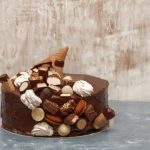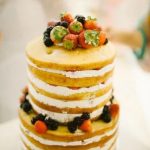Cake decorating has become increasingly popular, and the beauty of a well-decorated cake never fails to amaze. But have you ever wondered just how many different cake decorating tips exist? The answer might surprise you.
In this article, we will delve into the wide array of cake decorating tips available in the market today, exploring their functions, designs they can create, and techniques associated with each type of tip. Whether you are a professional baker or an enthusiastic home baker, this guide will inspire you to unleash your creativity and take your cake decorations to new heights.
When it comes to cake decorating, understanding the purpose and function of cake decorating tips is crucial. These tips are specially designed nozzles that fit onto piping bags and allow bakers to pipe out frosting in various shapes and patterns. The possibilities are limitless – from intricate lacework and delicate flower petals to bold star borders and playful lettering.
Each tip has its own unique features that contribute to creating a specific design or texture on the cake’s surface. With the right tip in hand, you can transform a simple baked good into a work of edible art.
Some of the most common types of cake decorating tips include star tips, round tips, leaf tips, and petal tips. Star tips are perfect for creating rosettes or textured designs with ridges or shells. Round tips are versatile for everything from writing messages on cakes to creating dots or outlining shapes.
Leaf tips help achieve realistic-looking foliage while petal tips mimic smooth flower petals with their curved edges. By experimenting with different combinations of these basic types of tips, bakers can unlock endless design possibilities.
But why stop at the basics? The realm of cake decorating goes beyond standard techniques with specialty cake decorating tips that add an extra touch of uniqueness to any creation. Imagine delicate lacework spreading across a wedding cake or stunning ruffled borders highlighting a special occasion dessert – all made possible through specialty tips designed specifically for these techniques.
In the following sections, we will take a closer look at some of these lesser-known but highly influential tips and explore their potential to elevate cake designs. So get ready to dive into this sweet adventure of cake decorating tips and discover the boundless creativity that awaits.
Understanding Cake Decorating Tips
Cake decorating tips are an essential tool for anyone looking to create beautiful and intricate designs on cakes. With a wide range of options available, it can be overwhelming to understand the purpose and functions of these tips. In this section, we will provide a brief overview of cake decorating tips, including their basic function and how they are used to create various designs.
Cake decorating tips are small attachments that fit onto the end of a piping bag. They come in different shapes and sizes, each designed to achieve a specific effect. The main purpose of these tips is to control the flow of frosting or icing onto the cake, allowing decorators to create patterns, designs, and intricate decorations.
One of the most common types of cake decorating tips is the round tip. This tip creates smooth lines or outlines on cakes and is perfect for writing or adding details. Star tips, on the other hand, create textured designs such as stars, shells, or zig-zags. Leaf tips can be used to make realistic-looking leaves or petals on floral designs, while petal tips are great for creating flowers with multiple layers.
It is important to select the right cake decorating tip for each design or technique you wish to achieve. Different techniques require different tip sizes and shapes. By understanding the purpose of each type of tip and experimenting with them, you can unlock endless possibilities for your cake decorations.
Essential Types of Cake Decorating Tips
Cake decorating tips are essential tools that allow bakers to create intricate and beautiful designs on cakes. There are numerous types of cake decorating tips available in the market, each with its unique features and abilities. In this section, we will explore some of the most common and essential types of cake decorating tips and explain the techniques associated with each one.
- Star tips: Star tips, also known as open star tips, are characterized by their sharp-edged openings. These tips are perfect for creating textured designs such as stars, swirls, shells, rosettes, and ruffles. They come in various sizes, allowing bakers to achieve different levels of detail and dimension in their decorations.
- Round tips: Round tips are versatile tools that can be used for a wide range of designs. They produce smooth lines, dots, beads, letters or numbers when used with consistent pressure. The smaller sizes are great for writing or outlining while larger ones can be used for filling in larger areas or creating borders.
- Leaf tips: Leaf tips are specially designed to mimic the natural shape and texture of leaves. With these tips, bakers can create realistic leaf designs or add delicate foliage details to floral arrangements on cakes. Leaf tips come in different sizes to accommodate various leaf sizes.
- Petal tips: Petal tips are incredibly useful for crafting lifelike floral decorations on cakes. These specialized tips have a curved edge that allows for the creation of petals with depth and definition. Petal tips come in different shapes and sizes to replicate different flower petal styles like roses, tulips, daisies, or lilies.
By using these essential cake decorating tips along with different piping techniques such as pressure control and stroke patterns,
bakers can let their imaginations run wild and transform simple cakes into edible works of art.
The Vast World of Specialty Cake Decorating Tips
In addition to the common and essential types of cake decorating tips, there is a vast world of specialty tips available in the market. These specialty tips are designed to add a personalized touch and elevate the overall cake design. While not as widely known, they can truly transform a cake into a work of art.
One type of specialty tip is the lettering tip. With this tip, cake decorators can easily create intricate and beautiful lettering on cakes. Whether it’s writing happy birthday messages or adding personalized greetings, these tips allow for precision and fine detail.
Another type of specialty tip is the lacework tip. This tip creates delicate and intricate lace patterns that can turn a simple cake into an elegant masterpiece. It takes some practice to master, but the results are well worth it.
Ruffle tips are also highly sought after by experienced cake decorators looking to create unique designs on their cakes. With these tips, decorators can effortlessly make beautiful, frilly ruffles that add texture and dimension to any cake design. Additionally, there are border tips specifically created for adding attractive borders and edging details to cakes. From scalloped borders to braided edges, these specialty tips provide endless possibilities for enhancing the look of a cake.
By incorporating these specialty tips into their repertoire, bakers can customize their cakes even further and unleash their creativity in new ways. With an open mind and willingness to experiment with different techniques, decorators can achieve stunning and unexpected results using these distinctive cake decorating tips. The possibilities truly are limitless, allowing for endless creativity and innovation in the world of cake decorating.
Whether you’re an aspiring home baker or a professional pastry chef, indulging in specialty cake decorating tips opens up a whole new world of creative opportunities. So don’t be afraid to explore beyond the basic options – try your hand at lettering tips for personalization, lacework for elegance, ruffle tips for texture, and border tips for added flair. With the right tools and a touch of imagination, you can create cakes that are nothing short of edible art masterpieces.
Unleashing Creativity
Exploring Extraordinary Tips
When it comes to cake decorating, there is a wide range of unique and extraordinary cake decorating tips available that can truly make your creations stand out. These tips go beyond the traditional star, round, and petal designs, allowing you to unleash your creativity and experiment with new and exciting techniques.
One such example is the open star tip. With its unique shape featuring multiple openings in a star pattern, this tip creates beautiful textured designs that are perfect for adding dimension to your cakes. Whether you want to create ruffles, rosettes, or shells, the open star tip offers endless possibilities.
If you’re looking to add some realistic texture to your cakes, consider using grass/hair tips. These tips are designed with small openings that mimic the appearance of grass or hair when piped onto the surface of a cake. They are great for creating lifelike details on animal-themed cakes or adding a whimsical touch to fairy tale-inspired creations.
For those who prefer a more intricate design, basket weave tips are an excellent choice. These tips create a woven pattern on the surface of the cake, resembling a traditional woven basket. With careful piping technique and practice, you can achieve stunning results that will leave everyone impressed.
Inspiring Examples
To inspire your own creative endeavors with unique cake decorating tips, here are some examples of cakes that have been beautifully decorated using these extraordinary tools:
- A garden-themed cake decorated with grass/hair tips to create lush greenery and delicate flower accents.
- A beach-themed cake adorned with shell-like patterns created using the open star tip for a tropical coastal vibe.
- A rustic wedding cake adorned with basket-weave detailing along with sugar flowers for an elegant yet country-inspired look.
The key to successfully using these unique tips is practice and patience. Don’t be afraid to experiment and try new things. With time and dedication, you’ll be able to master these techniques and create stunning cake decorations that will leave an everlasting impression.
Unleashing your creativity with unique cake decorating tips allows you to take your cakes to the next level. From open star tips to grass/hair tips and basket weave tips, there are endless possibilities for creating extraordinary designs.
By experimenting with these tools and practicing different techniques, you can elevate your cake decorating skills and create cakes that are truly one-of-a-kind. So go ahead, let your imagination run wild, and explore the sweet adventure of using unique cake decorating tips.
DIY Cake Decorating Tips
Introduction:
Cake decorating can be a fulfilling and enjoyable activity for home bakers, but the cost of professional cake decorating tips can sometimes be prohibitive. However, there are alternative solutions available for those who want to explore their creativity without breaking the bank. In this section, we will explore some do-it-yourself (DIY) options that can be used as cake decorating tips. These alternatives are often readily available in most households, making them convenient and affordable options for home bakers.
Plastic Bags:
One of the simplest DIY solutions for cake decorating tips is using plastic bags. Ziplock bags or sandwich bags can easily be transformed into makeshift piping bags. Simply snip off a small corner of the plastic bag and insert your desired tip shape. Then fill the bag with frosting or buttercream and seal it shut. This allows you to control the flow of frosting while giving you the ability to create different designs and patterns on your cakes.
Toothpicks or Wooden Skewers:
Toothpicks or wooden skewers can be repurposed as small and delicate cake decorating tools. By shaping the tip of a toothpick or skewer into various forms such as curves, angles, or points, you can use them to create intricate details on your cakes. These DIY tips work especially well for drawing fine lines, dots, or adding tiny accents to your decorations.
Cutlery:
When it comes to creating specific designs like leaves or petals, cutlery items such as teaspoons or forks can be used effectively. The back of a teaspoon can be shaped into a convex curve which makes it ideal for creating smooth lines on cakes. Forks can also be utilized by placing the tines along an edge of the icing and pulling them up gently to create textured patterns like basketweave or grass/hair.
By exploring these simple household items as alternative DIY cake decorating tips, home bakers can save money while still achieving beautiful and professional-looking cake decorations. These solutions may require a little bit of creativity and practice, but they can certainly deliver impressive results. So, the next time you’re craving some creative cake decorating, look no further than your own kitchen for these DIY alternatives.
Building Your Collection
Cake decorating is a popular and creative activity that requires various tools and techniques. One of the most essential tools in cake decorating is the cake decorating tips. These tips come in a wide range of shapes, sizes, and designs, allowing decorators to create intricate and beautiful designs on cakes. When building your collection of cake decorating tips, there are several factors to consider in order to make informed decisions and ensure quality and durability.
One important factor to consider when buying cake decorating tips is the material they are made from. The most common materials used for cake decorating tips are stainless steel, plastic, and silicone. Stainless steel tips are durable and can withstand frequent use without losing their shape. Plastic tips are more affordable but may not be as durable as stainless steel ones. Silicone tips are flexible and easy to clean but may not produce sharp edges on decorations.
Compatibility with different piping bags is another important factor to consider. Piping bags come in various sizes and materials, so it’s crucial to choose cake decorating tips that can fit securely into the piping bag without any leakage or difficulty in attaching them. Some brands offer specific tips that are compatible with their own piping bags, while others have universal fittings that can work with any brand of piping bags.
Ease of cleaning is also an important consideration when buying cake decorating tips. Some tips have intricate designs or small openings that can make cleaning them a challenging task. Tips that have removable parts or smoother surfaces are generally easier to clean compared to those with complex designs or small crevices where frosting can get trapped.
| Brand | Key Features |
|---|---|
| Wilton | Wide range of tip options, durable stainless steel construction |
| Ateco | Long history of producing high-quality cake decorating tools, extensive range of tip designs |
| Russian Piping Tips | Unique designs for creating floral patterns and intricate decorations, made from food-grade stainless steel |
| Fat Daddio’s | Precision-engineered tips for consistent results, easy-to-clean design |
By considering these factors and opting for reputable brands, you can ensure that your collection of cake decorating tips will provide you with years of creative possibilities and stunning cake designs.
Mastering the Art of Cake Decorating
Introduction:
Cake decorating is a popular and creative way to transform a simple cake into a stunning work of art. However, for beginners, it can seem overwhelming to achieve those beautifully decorated cakes seen in bakeries or on social media. This section will provide practical tips and advice for beginners who are eager to master the art of cake decorating.
Tips for Beginners:
- Proper Piping Bag Technique: One of the essential skills in cake decorating is mastering how to hold a piping bag correctly. Hold the bag with your dominant hand, applying gentle pressure with your palm on the top of the bag while guiding it from the back with your other hand. This technique provides better control and precision when piping.
- Consistent Pressure: When squeezing the icing out of the piping bag, maintain consistent pressure throughout to ensure even flow and consistent results. Practice controlling the pressure by starting with light pressure and gradually increasing as you gain more confidence.
- Control the Flow of Frosting: Controlling the flow of frosting is crucial in creating clean lines and beautiful designs. To prevent excess frosting from oozing out when you stop squeezing, release pressure gradually while maintaining steady movement.
- Practice, Practice, Practice: Cake decorating is an art that requires patience and practice. Start by practicing basic techniques on parchment paper or wax paper before moving on to decorating an actual cake. Don’t be discouraged if your first attempts don’t turn out perfectly; learning from mistakes is an integral part of improving your skills.
- Seek Inspiration and Guidance: There are numerous resources available for beginner cake decorators to seek inspiration and guidance. Explore tutorials online, watch YouTube videos, or join local baking communities where you can interact with experienced decorators who can provide valuable tips and encouragement.
As beginners continue to practice these tips and techniques, they will see improvement in their cake decorating skills over time. Remember that everyone starts somewhere, so embrace mistakes as learning opportunities and have fun experimenting with different designs and techniques. With dedication and practice, beginners can soon achieve professional-looking cake decorations on their cakes.
| Tips for Beginners |
|---|
| Proper Piping Bag Technique |
| Consistent Pressure |
| Control the Flow of Frosting |
| Practice, Practice, Practice |
| Seek Inspiration and Guidance |
Conclusion
In conclusion, cake decorating tips offer a sweet adventure for bakers of all levels. Through this article, we have explored the limitless possibilities that these tips bring to the world of cake decoration. From the basic functions and purposes of cake decorating tips to the essential types and even specialty options, we have seen how these tools can transform simple cakes into works of art.
We have discovered that there are countless designs and patterns that can be created using different cake decorating tips. Whether it is the versatile star tips, round tips for creating smooth lines, leaf tips for beautiful foliage, or petal tips for lifelike flowers, each type has its own unique features and techniques associated with it.
Additionally, we have delved into the vast world of specialty cake decorating tips that allow bakers to add a personalized touch and elevate their creations further.
Furthermore, this article has encouraged readers to step out of their comfort zones and experiment with unique cake decorating tips. Open star tips, grass/hair tips, basket weave tips, and more offer endless opportunities for creativity. By showcasing stunning examples of cakes decorated with these distinctive tips, readers are inspired to try new techniques and create their own masterpieces.
With DIY alternatives available for home bakers on a budget, it is clear that anyone can embark on their own cake decorating journey. This article has provided guidance on choosing the right tip based on material and compatibility with piping bags as well as practical advice for beginners. By emphasizing patience, practice, and skill building, readers are empowered to achieve professional-looking cake decorations.
Frequently Asked Questions
What are the different tips for cake decorating?
Cake decorating can be a fun and creative process, and there are various tips and techniques to enhance the appearance of your cakes. One tip is to always start with a smooth layer of frosting or ganache before piping any decorations. This helps create a clean canvas for your designs.
Another important tip is to use a piping bag that fits comfortably in your hand, as it allows for better control and precision while piping. Additionally, using different nozzle shapes can yield different effects – for example, star-shaped tips are great for creating textured borders or rosettes, while round tips are perfect for writing messages or creating dots.
Are cake decorating tip numbers universal?
Cake decorating tip numbers are not universal across all brands and manufacturers. While some tip numbers might have similar shapes across different brands, it’s still essential to verify the specific shape and size of a tip before purchasing or using it.
Different brands may assign different numbers to their tips or offer unique variations in shape. To ensure accuracy, it’s advisable to refer to the packaging or instructions provided by the brand you’re using.
Which piping tips do what?
Piping tips are available in a wide range of shapes and sizes, each serving a specific purpose in cake decoration. Some common examples include round tips (such as #1 or #3), which are ideal for creating fine lines, lettering, or outlining designs. Star-shaped tips (like #16 or #18) are excellent choices for producing stars, shells, borders, or even covering an entire surface with textured patterns like rosettes. Petal-shaped tips (e.g., #59 or #104) work well when making flowers or ruffles on cakes and cupcakes.
Leaf-shaped tips (such as #352) can be used to create realistic leaves or add texture to floral arrangements on cakes. Lastly, there are specialty tips like the grass/hair/straw tip (#233), which is great for making edible grass-like textures on cakes representing landscapes or animal fur. Understanding the purpose and characteristics of each piping tip allows decorators to select the right tool for their desired design outcome.

Welcome to our cake decorating blog! My name is Destiny Flores, and I am the proud owner of a cake decorating business named Cake Karma. Our mission is to provide delicious, beautiful cakes for all occasions. We specialize in creating custom cakes that are tailored specifically to each customer’s individual needs and tastes.





